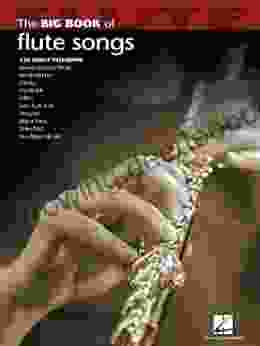Comparing Fractions: A Comprehensive Guide for Mathematics Readers

Fractions, representing parts of a whole or a set, are fundamental mathematical concepts encountered throughout various disciplines. Comparing fractions is a crucial skill that enables us to establish relationships between values, solve problems, and make informed decisions. This article aims to provide a comprehensive overview of fraction comparison, encompassing essential concepts, methodologies, and strategies. We will explore both like and unlike denominators, equivalent fractions, and ordering techniques.
When fractions have the same denominator (bottom number),comparing them is relatively straightforward. We simply focus on the numerators (top numbers). The fraction with the larger numerator is the greater value. For example, 3/5 is greater than 2/5 because 3 is greater than 2.
$$ \frac{3}{5}> \frac{2}{5}$$
4.6 out of 5
| Language | : | English |
| File size | : | 47424 KB |
| Screen Reader | : | Supported |
| Print length | : | 34 pages |
When fractions have different denominators, a direct comparison is not possible. To overcome this challenge, we need to convert the fractions into equivalent forms with the same denominator. To do so, we can employ two main methods: using the greatest common factor (GCF) or the least common multiple (LCM).
- Using the Greatest Common Factor (GCF): Identify the GCF of the denominators and multiply both the numerator and denominator of each fraction by a factor that will result in the same denominator. For example, to compare 1/2 and 1/3, we find the GCF of 2 and 3, which is 1. Multiplying both fractions by 3, we get 3/6 and 3/9.
$$ \frac{1}{2}= \frac{1}{2}\times \frac{3}{3}= \frac{3}{6}$$
$$ \frac{1}{3}= \frac{1}{3}\times \frac{3}{3}= \frac{3}{9}$$
- Using the Least Common Multiple (LCM): Determine the LCM of the denominators and multiply both the numerator and denominator of each fraction by a factor that will result in the same denominator. For example, to compare 1/4 and 1/6, we find the LCM of 4 and 6, which is 12. Multiplying both fractions by 3, we get 3/12 and 2/12.
$$ \frac{1}{4}= \frac{1}{4}\times \frac{3}{3}= \frac{3}{12}$$
$$ \frac{1}{6}= \frac{1}{6}\times \frac{2}{2}= \frac{2}{12}$$
Once the fractions have been converted to equivalent forms with the same denominator, we can compare them by looking at their numerators. The fraction with the larger numerator is the greater value. In our examples, 3/6 is greater than 3/9, and 3/12 is greater than 2/12.
$$ \frac{3}{6}> \frac{3}{9}$$
$$ \frac{3}{12}> \frac{2}{12}$$
Two fractions are said to be equivalent if they represent the same value. To check for equivalence, we can cross-multiply the numerators and denominators. If the products are equal, the fractions are equivalent. For example, 2/3 and 4/6 are equivalent because 2 x 6 = 4 x 3.
$$ \frac{2}{3}= \frac{4}{6}$$
Equivalent fractions provide a powerful tool for comparing fractions because they allow us to convert fractions to forms that are easier to compare. By making the denominators the same, we can eliminate the need for GCF or LCM calculations and focus solely on the numerators.
Ordering fractions refers to arranging them in ascending or descending order. To order fractions, we can use the same methods as for comparing fractions. If the fractions have like denominators, we order them based on their numerators. If they have unlike denominators, we convert them to equivalent forms with the same denominator and then order them.
For example, to order the fractions 1/2, 1/4, and 1/3 from least to greatest, we first convert them to equivalent forms with the same denominator, which is 12.
$$ \frac{1}{2}= \frac{1}{2}\times \frac{6}{6}= \frac{6}{12}$$
$$ \frac{1}{4}= \frac{1}{4}\times \frac{3}{3}= \frac{3}{12}$$
$$ \frac{1}{3}= \frac{1}{3}\times \frac{4}{4}= \frac{4}{12}$$
Now that the fractions have the same denominator, we can order them by looking at their numerators: 3/12 Visual Models and Real-World Applications
Visual models, such as number lines and fraction circles, can provide a concrete understanding of fraction comparison. Number lines represent fractions as points on a line, while fraction circles divide a circle into equal parts. These models allow students to visualize the relationships between fractions and compare their values.
Fraction comparison has various applications in real-world scenarios. For instance, in cooking, we need to compare fractions to measure ingredients accurately. In finance, we compare interest rates and loan terms to make informed decisions. In construction, we compare fractions to determine the appropriate ratios of materials for mixing and building.
Comparing fractions is an essential mathematical skill that plays a crucial role in problem-solving and decision-making. Through a comprehensive understanding of like and unlike denominators, equivalent fractions, and ordering techniques, we can effectively compare fractions and apply this knowledge to various fields. Remember that practice and perseverance are key to mastering fraction comparison. By engaging with numerous examples and challenging ourselves
4.6 out of 5
| Language | : | English |
| File size | : | 47424 KB |
| Screen Reader | : | Supported |
| Print length | : | 34 pages |
Do you want to contribute by writing guest posts on this blog?
Please contact us and send us a resume of previous articles that you have written.
 Novel
Novel Text
Text Story
Story Genre
Genre Paperback
Paperback E-book
E-book Newspaper
Newspaper Paragraph
Paragraph Sentence
Sentence Glossary
Glossary Bibliography
Bibliography Foreword
Foreword Annotation
Annotation Footnote
Footnote Manuscript
Manuscript Codex
Codex Tome
Tome Narrative
Narrative Biography
Biography Autobiography
Autobiography Encyclopedia
Encyclopedia Dictionary
Dictionary Thesaurus
Thesaurus Character
Character Card Catalog
Card Catalog Borrowing
Borrowing Stacks
Stacks Archives
Archives Research
Research Scholarly
Scholarly Reserve
Reserve Academic
Academic Journals
Journals Special Collections
Special Collections Literacy
Literacy Storytelling
Storytelling Reading List
Reading List Book Club
Book Club Theory
Theory Textbooks
Textbooks Matthew Ismail
Matthew Ismail Sean Thor Conroe
Sean Thor Conroe Greg Morse
Greg Morse Barry Louis Polisar
Barry Louis Polisar Elithe Hamilton Kirkland
Elithe Hamilton Kirkland Bob Bearden
Bob Bearden Jennifer Kasius
Jennifer Kasius Zoi A Philippakos
Zoi A Philippakos Amy Joy Bsw Mpa
Amy Joy Bsw Mpa Patty Dann
Patty Dann Sue Beevers
Sue Beevers Tania Romanov
Tania Romanov Kat Mizera
Kat Mizera Geoff Tarsen
Geoff Tarsen Agnes Sullivan
Agnes Sullivan Richard Floyd
Richard Floyd Brendon Stock
Brendon Stock Kay Carter
Kay Carter Lawrence R Jacobs
Lawrence R Jacobs Parker Avrile
Parker Avrile
Light bulbAdvertise smarter! Our strategic ad space ensures maximum exposure. Reserve your spot today!

 Avery SimmonsEssential Lessons For String Slide Cigar Box Guitar: 101 Riffs And Lessons...
Avery SimmonsEssential Lessons For String Slide Cigar Box Guitar: 101 Riffs And Lessons... Hugo CoxFollow ·3.7k
Hugo CoxFollow ·3.7k Ben HayesFollow ·8.8k
Ben HayesFollow ·8.8k Sean TurnerFollow ·7.4k
Sean TurnerFollow ·7.4k Wade CoxFollow ·9.3k
Wade CoxFollow ·9.3k Marcus BellFollow ·11.1k
Marcus BellFollow ·11.1k Hugh ReedFollow ·4.1k
Hugh ReedFollow ·4.1k Dean CoxFollow ·13.8k
Dean CoxFollow ·13.8k Dillon HayesFollow ·10.6k
Dillon HayesFollow ·10.6k

 Darius Cox
Darius CoxThe Gathering Pacific Storm: An Epic Struggle Between...
The Gathering...

 Hugo Cox
Hugo CoxHow CIA-Contra Gangs and NGOs Manufacture, Mislabel, and...
In the annals of covert operations, the CIA's...

 Finn Cox
Finn CoxDr. Brandt's Billionaires Club Series: The Ultimate...
A Journey into the Pinnacle of...

 Isaac Asimov
Isaac AsimovCurrent Affairs Daily Digest 20180730 30th July 2024
National ...

 Felix Carter
Felix CarterBroadway Celebrates The Big Apple Over 100 Years Of Show...
Broadway Celebrates the Big Apple: Over 100...

 Beau Carter
Beau CarterThe Big Book of Flute Solos: A Comprehensive Collection...
If you're a flute player,...
4.6 out of 5
| Language | : | English |
| File size | : | 47424 KB |
| Screen Reader | : | Supported |
| Print length | : | 34 pages |










